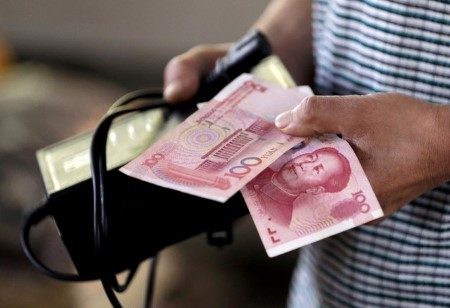




Monthly Recap: BSP to outpace the Fed in rate cuts
 DOWNLOAD
DOWNLOAD

Quarterly Economic Growth Release: 5.4% Q12025
 DOWNLOAD
DOWNLOAD

Policy rate views: Uncertainty stalls cuts
 DOWNLOAD
DOWNLOAD


TOP SEARCHES
What direction will the trade war take? Watch the yuan: McGeever

ORLANDO, Florida – What’s the most important exchange rate in the world right now? Probably dollar/yuan.
How Beijing responds to the eye-popping tariffs the Trump administration slapped on Chinese exports to the US will be critical not only for China, but also for its ‘plus one’ trading partners in Asia, and world markets more broadly.
The total tariff rate on US imported goods from China is now a whopping 54%. If maintained for a reasonable length of time, this will be a financial hit to Beijing that will likely hinder its efforts to address its lingering real estate crisis, boost consumption, build its military might, and fund its myriad investments.
And, unlike in the first Trump trade war, China can’t rely on funneling exports and investment through ‘plus one’ countries in Asia to mitigate the tariff shock because those nations have also been hit with punitive levies. In some cases, like Vietnam, the tariffs are even higher than China’s.
That leaves currency devaluation as perhaps the most powerful weapon China can wield as it looks to respond to Washington’s latest salvo. But unfortunately for Beijing, that strategy is fraught with risk.
Limited room to maneuver
A rapid fall in the yuan’s value could trigger huge capital flight as international and domestic investors pull money out of the country, slamming domestic asset prices and stoking financial market volatility.
And beyond China’s borders, a tumbling yuan could force other Asian countries to let their currencies fall in order to maintain competitiveness, potentially sparking a ‘beggar-thy-neighbor’ FX devaluation war, the last thing any of them need.
Moreover, currency devaluation runs counter to the sweep of reforms and stimulus measures Beijing has announced since September, as it seeks to reflate the economy via domestic consumption rather than exports.
And China’s room for further policy stimulus is already fading. Further interest rate cuts and liquidity provisions will probably come, but a major fiscal boost will involve issuing more bonds, which will strain an already widening budget deficit.
Indeed, Fitch downgraded China’s credit rating on Thursday by one notch to ‘A’, citing a deterioration in the public finances as Beijing scrambles to shore up tariff-hit growth.
“Everything now depends on China,” says Robin Brooks, senior fellow at the Brookings Institution, warning that a meaningful devaluation of the yuan could begin a global ‘risk-off’ downward spiral that could slam emerging markets and, if it persists, tank the US economy as well.
All eyes on China
Beijing has previously said it won’t go down the FX depreciation road, preferring to keep the yuan relatively “stable”. But that was before Trump’s self-styled “Liberation Day”.
Beijing’s first response might be to try and negotiate with Washington to get the tariffs lowered. But if that fails, FX devaluation becomes a real option to offset the shock.
Analysts at Goldman Sachs are among those who believe China will continue to resist “significant” FX depreciation, but they note that the combined impact of all the US tariffs on China announced since Trump’s inauguration in January could take a 1.7 percentage point bite out of China’s annual growth rate. That’s huge.
What do the FX markets think? You should never read too much into one day’s moves. But it’s worth noting that dollar/yuan on Thursday clocked its biggest spot market rise in five months, and the People’s Bank of China allowed the yuan to depreciate the most in four months at the daily fixing.
Moving forward, the big level to watch for spot dollar/yuan is 7.35, and 7.25 for the central bank’s daily fixing. Breaking through those would leave the yuan at its weakest point against the US dollar since the depths of the Global Financial Crisis in late 2008.
The yuan isn’t too far away from these levels right now. The world is watching.
(The opinions expressed here are those of the author, a columnist for Reuters.)
(By Jamie McGeever; Editing by Nia Williams)
This article originally appeared on reuters.com





 By Reuters
By Reuters